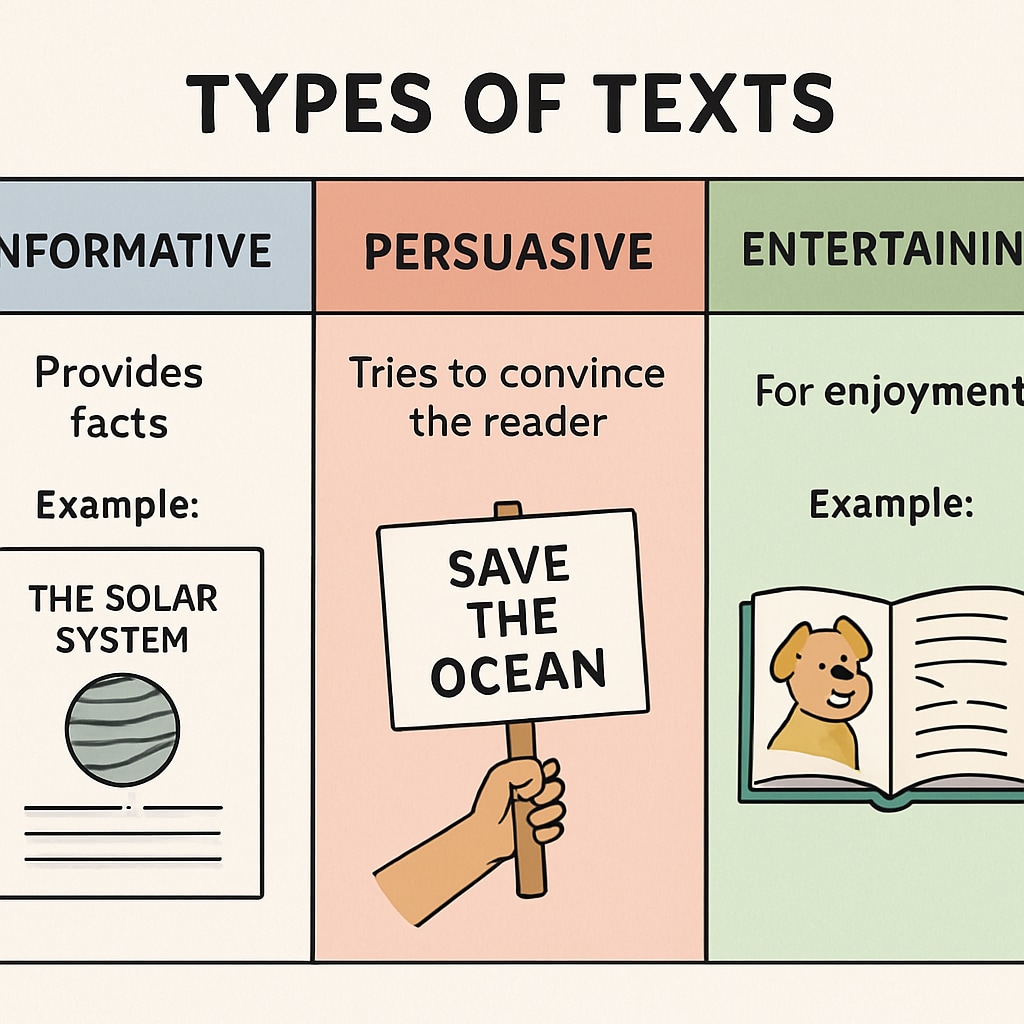Functional English reading tests are a fundamental part of language assessment, designed to evaluate a student’s ability to understand and respond to diverse types of texts. Identifying the text purpose is a critical skill, as it enables students to extract relevant information and engage with the material effectively. This article explains the three primary text purposes commonly found in these tests—inform, persuade, and entertain—and provides actionable strategies to help K12 students master this skill.

Understanding the Three Main Text Purposes
Texts in functional English reading tests often serve one of three purposes: to inform, to persuade, or to entertain. Recognizing these purposes is essential for accurate comprehension and response. Below is a detailed breakdown of each purpose:
- Inform: These texts aim to provide factual information or explain concepts. Examples include news articles, manuals, and reports. They are typically neutral and objective.
- Persuade: Persuasive texts are designed to influence the reader’s opinion or encourage action. Advertisements, opinion editorials, and campaign materials are common examples. They often use emotive language and rhetorical devices.
- Entertain: Texts written for entertainment often include stories, poems, or anecdotes. They aim to engage the reader emotionally, featuring creative or imaginative language.
By understanding these categories, students can approach texts with clarity and discern the author’s intent effectively.
Practical Strategies for Identifying Text Purposes
Accurately determining a text’s purpose requires careful analysis. Here are some practical strategies to guide students:
- Analyze the Language: Pay attention to word choice and tone. Informative texts use straightforward and factual language, persuasive texts use emotive and directive language, while entertaining texts often feature descriptive or playful language.
- Examine the Structure: Informative texts are often organized with headings and subheadings, persuasive texts may include calls to action, and entertaining texts may follow a narrative structure.
- Consider the Audience: Think about who the text is targeting. For example, a manual is aimed at users seeking instructions, whereas an advertisement targets potential buyers.
- Look for Visual Clues: Images, charts, or formatting can provide hints. For instance, bold headlines in advertisements suggest persuasion, while detailed diagrams in manuals indicate information.

Applying These Skills in Functional English Tests
Functional English tests often include questions that require students to identify the purpose of a given text. Here are steps to approach such questions effectively:
- Read Carefully: Start by reading the text thoroughly to grasp its overall message and tone.
- Identify Key Features: Highlight any specific words, phrases, or structural elements that indicate the purpose.
- Predict the Purpose: Based on your observations, decide whether the text is meant to inform, persuade, or entertain.
- Review the Questions: Ensure your answer aligns with the context of the question and supports your reasoning.
By practicing these steps regularly, students can develop confidence and accuracy in identifying text purposes.
Why Text Purpose Matters in Reading Comprehension
Understanding text purposes is not just about answering questions correctly; it also enhances overall reading comprehension. When students can identify the intent behind a text, they can better engage with its content, evaluate its credibility, and respond appropriately. This skill is valuable not only in tests but also in real-world situations, such as interpreting emails, advertisements, or news articles.
As a result, mastering text purposes equips students with critical thinking and analytical skills, preparing them for academic success and beyond.
Readability guidance: Use short paragraphs and clear lists to summarize key points. Ensure smooth transitions between sections using words like “however,” “therefore,” and “for example.”


